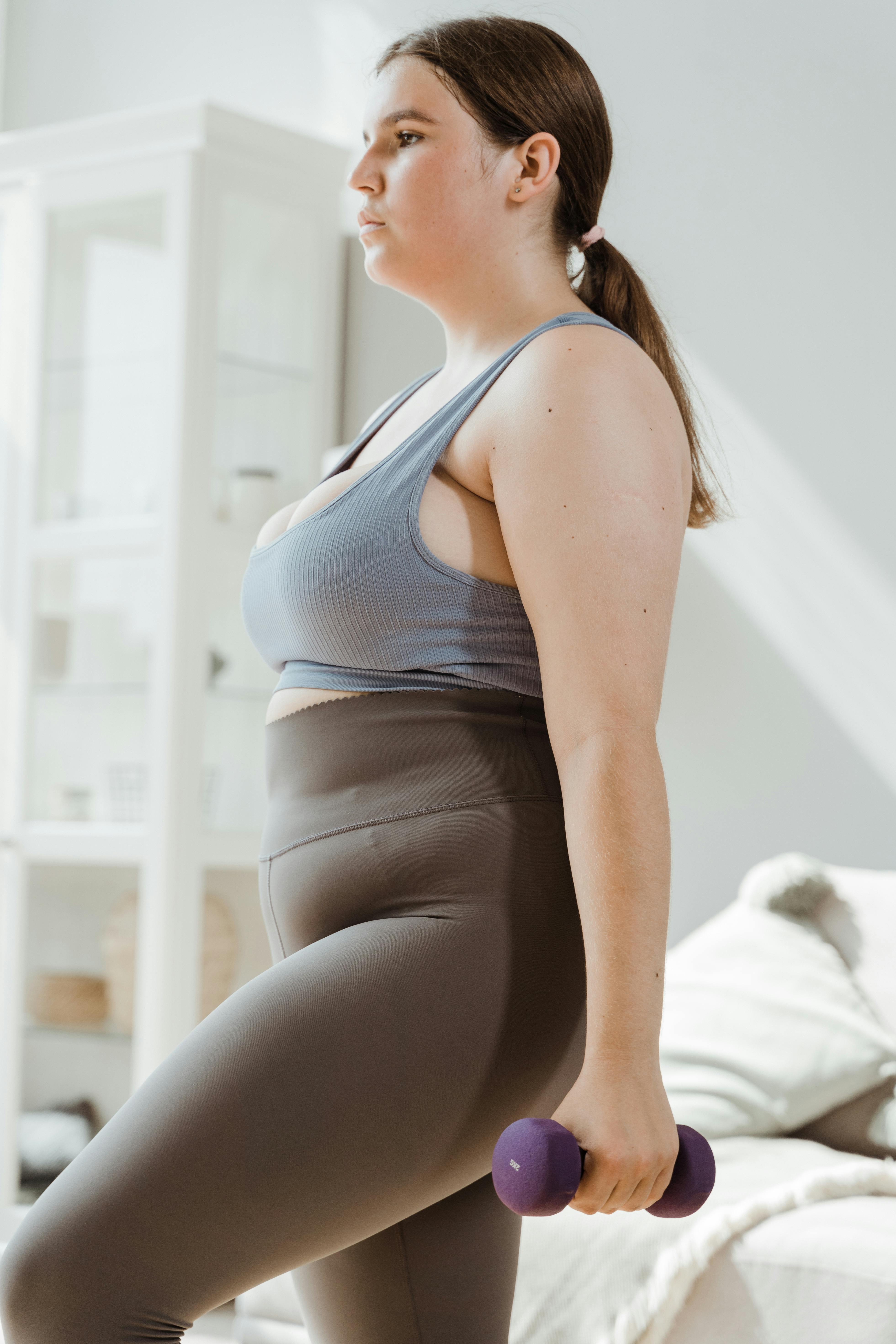Effective Ways to Enhance Your Schulterheben Kurzhantel Technique in 2025
In the world of fitness, mastering techniques such as the Schulterheben (shoulder shrug) with dumbbells (Kurzhantel Schulterheben) can significantly enhance your overall training results. As an essential part of your shoulder training routine, this exercise focuses on building the Schultermuskulatur (shoulder muscles) and improving the overall strength and mobility of your upper body. In this article, we’ll explore various effective methods to improve your technique, allowing you to achieve your fitness goals more efficiently.
By understanding the importance of proper form and technique, as well as integrating effective training strategies into your routine, you can elevate your shoulder workout while minimizing the risk of injury. We’ll provide tips on warm-up exercises, progression strategies, and variations that suit your fitness level, whether you’re at the gym or doing home workouts.

Ready to make shoulder training exciting and effective? Let’s dive into the key techniques for enhancing your Schulterheben Kurzhantel performance in 2025!
Essential Techniques for Schulterheben with Dumbbells
Building on the fundamentals of shoulder exercises, let’s delve into the essential techniques to properly execute the Schulterheben with dumbbells. This exercise emphasizes both the Deltamuskel (deltoid muscle) and muscle activation within the shoulder blades (Schulterblatt), crucial for maximizing muscle gains.
Proper Form and Technique
Mastering the proper form is paramount when performing Schulterheben. Start by standing upright, holding a dumbbell in each hand with palms facing your body. Engage your core and keep your shoulders relaxed. Lift your shoulders towards your ears, focusing on squeezing your shoulder blades together at the peak of the movement. Remember to lower your shoulders back down in a controlled manner. A common mistake to avoid is using momentum instead of engaging your muscles, which can lead to decreased effectiveness and potential injury.
Warm-Up Exercises for Shoulder Stability
Before engaging in shoulder training, incorporating warm-up exercises can significantly enhance your workout. Dynamic stretches like arm circles and shoulder dislocates help to increase mobility and prepare the shoulder joint for upcoming movements. Additionally, resistance band exercises targeting the rotator cuff can effectively activate smaller shoulder muscles, promoting stability during heavier lifts.
Core and Rump Stability
Incorporating core and rump stability into your Schulterheben exercises enhances control and prevents injury. Strengthening the Rumpfstabilität (core stability) supports proper posture, maximizing workout efficiency. Exercises like planks and bird-dogs bolster core engagement, allowing a more controlled execution of the Schulterheben.
Strategies to Increase Training Intensity
With these basics established, we can explore various strategies to increase the intensity of your shoulder workouts, promoting muscle definition and growth.
Progressive Overload Techniques
Progressive overload is a critical principle for muscle building. Gradually increase the weight of your dumbbells or the number of Wiederholungen (repetitions) you perform. For instance, if you begin with a comfortable weight, aim to add 2.5kg to 5kg weekly, depending on your fitness level. This approach ensures continuous muscle adaptation, leading to effective strength gains.
Variations of Dumbbell Shoulder Shrugs
Incorporating various Kurzhantel Varianten (dumbbell variants) into your routine can prevent plateaus. Try alternating between standard shoulder shrugs, reverse shrugs, or even single-arm shoulder shrugs to diversify your workouts. Each variation targets different muscle fibers, enhancing overall muscle development and functional strength.
Linking Shoulder Training with Other Muscle Groups
Integrating Schultertraining into a Ganzkörpertraining (full-body workout) routine can amplify results and save time. For example, pairing shoulder shrugs with upper back exercises like rows can optimize your training session. Additionally, implementing compound movements such as overhead presses also engages the shoulders while strengthening the overall upper body.

Understanding Recovery and Regeneration
Connected to these training intensification methods is the importance of recovery and regeneration in any fitness regime. Recovery allows your muscles to repair and grow, which is essential for effective shoulder muscle definition and injury prevention.
Cool Down and Stretching Techniques
After a rigorous workout, it is crucial to cool down properly. Engage in static stretching focusing on the shoulder and upper back areas to aid recovery. Techniques like cross-body shoulder stretches and neck tilts can alleviate muscle tension and improve flexibility. Implementing these cool-down strategies supports overall recovery and reduces muscle soreness.
Nutrition for Shoulder Training
Sporternährung (sports nutrition) plays a vital role in muscle recovery and overall performance. Consuming adequate protein post-workout aids muscle repair, while complex carbohydrates replenish glycogen stores. Consider foods rich in Omega-3 fatty acids to combat inflammation and support recovery. Staying hydrated before, during, and after workouts also enhances physical performance.
Tips for Injury Prevention
With the intensification of training and careful attention to recovery, let’s now highlight essential tips for preventing injuries during your shoulder workouts.
Recognizing Early Signs of Overtraining
It’s important to listen to your body and be aware of signs of overtraining, which can manifest as persistent muscle soreness or fatigue. Taking an extra rest day when needed is crucial. Adjusting your training frequency may help maintain consistent progress without risking injury.
Importance of Proper Equipment
Utilizing the right Fitnessgeräte (fitness equipment) for your workouts significantly contributes to injury prevention. Ensure your dumbbells are suited to your fitness level, and consider incorporating grip pads or weightlifting gloves for better control. A proper workout space with adequate ventilation and flooring can also enhance workout safety.
Maximizing Your Fitness Journey with Online Coaching
As the fitness landscape evolves, online coaching offers tailored training for individual needs, focusing on technique enhancement and goal achievement.
Finding the Right Coach
Choosing a personal trainer or online coach who specializes in shoulder training can provide you with personalized feedback and training plans. They can help adapt workouts to suit your needs, whether you want to build strength or improve your technique.
Utilizing Data and Technology
Sporttechnologie (sports technology) can also facilitate progress. Using apps to track your exercises, monitor heart rate, and analyze training sessions can provide valuable insights to enhance your technique and performance. Data-driven approaches significantly boost motivation while catering to individual training preferences.
Q&A About Schulterheben Kurzhantel Technique
What are the benefits of Kurzhantel Schulterheben?
Kurzhantel Schulterheben primarily strengthens the shoulder muscles while promoting better posture and upper body strength. It enhances muscle definition, improves flexibility, and supports overall fitness levels.
How often should I perform Schulterheben exercises?
For optimal results, it is recommended to incorporate Schulterheben exercises into your training routine 1-2 times per week. Ensure a balanced program that includes recovery days to prevent overtraining.
What are common mistakes to avoid during this exercise?
Common mistakes include using excessive weight, which can compromise form, and neglecting to engage the core. Always prioritize proper posture and controlled movements to maximize benefits.
Can I perform this exercise at home?
Absolutely! Schulterheben can be effectively performed at home using dumbbells or alternative weights such as water bottles, making it convenient for those with home training goals.
How can I track my progress in Schulterheben?
Keeping a training journal or using fitness apps allows you to document your exercises, weights used, and repetitions completed, providing a clear picture of your progress over time.
By integrating these effective techniques and principles into your shoulder training routine, you can enhance your Schulterheben Kurzhantel technique, ensuring a successful fitness journey in 2025 and beyond.
